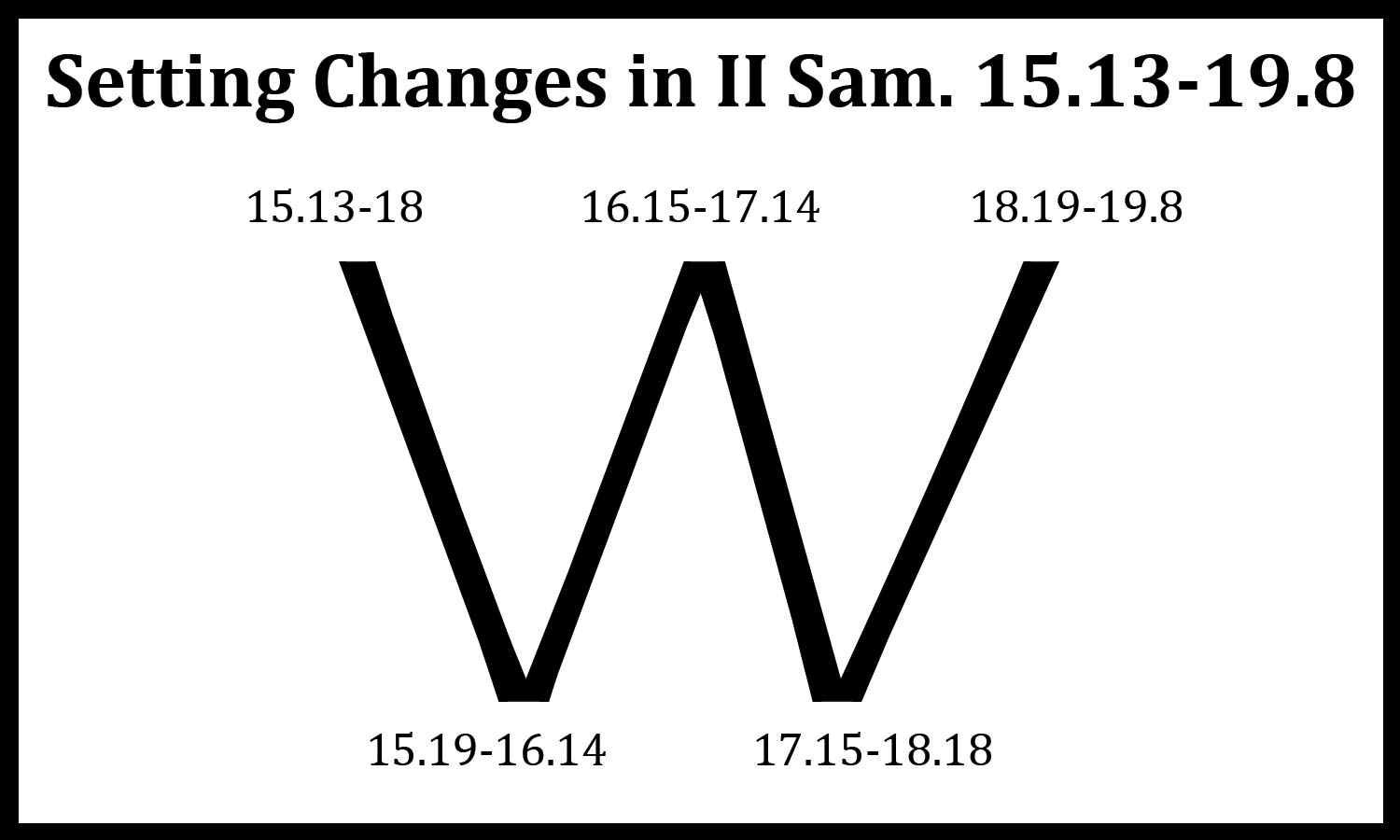In a recent Sunday School class, I was placed in a small group of students and given a passage of Scripture to work through, finding lessons to share with the class. I’ll spend the next few post in sort of mini-series on literary aspects of the story of Absalom’s attempted take-over of his father David’s kingdom as recorded in II Sam. 15.13-19.8. Please take the time to read that passage before you finish this article.
The first literary feature I’d like to note is setting. In a nutshell, the setting of this plot follows what I call a “W-shape” – see the illustration below.
It begins and ends with David hearing news in Jerusalem. The first time, he hears the news of Absalom’s rebellion and flees; in the end, he hears the news of Absalom’s death and grieves deeply. These are the high ends of the W.
The two low points are accounts of fleeing. Again, we find a contrast. David flees from Absalom and meets several people on the way; Ahithophel and Absalom flee and are killed alone. (More will be said about the other people whom David met in a future post.)
And the center of the W is the hinge of the plot: Absalom is forced to choose between conflicting advisors in Jerusalem – his decision is the pivot on which the suspense of the story swings. (Also, a subsequent post will focus on the plot structure.)
These changes in setting play an important role in helping us understand the story. They focus our attention on the center of the narrative by sandwiching it between two pairs of matching bookends.
